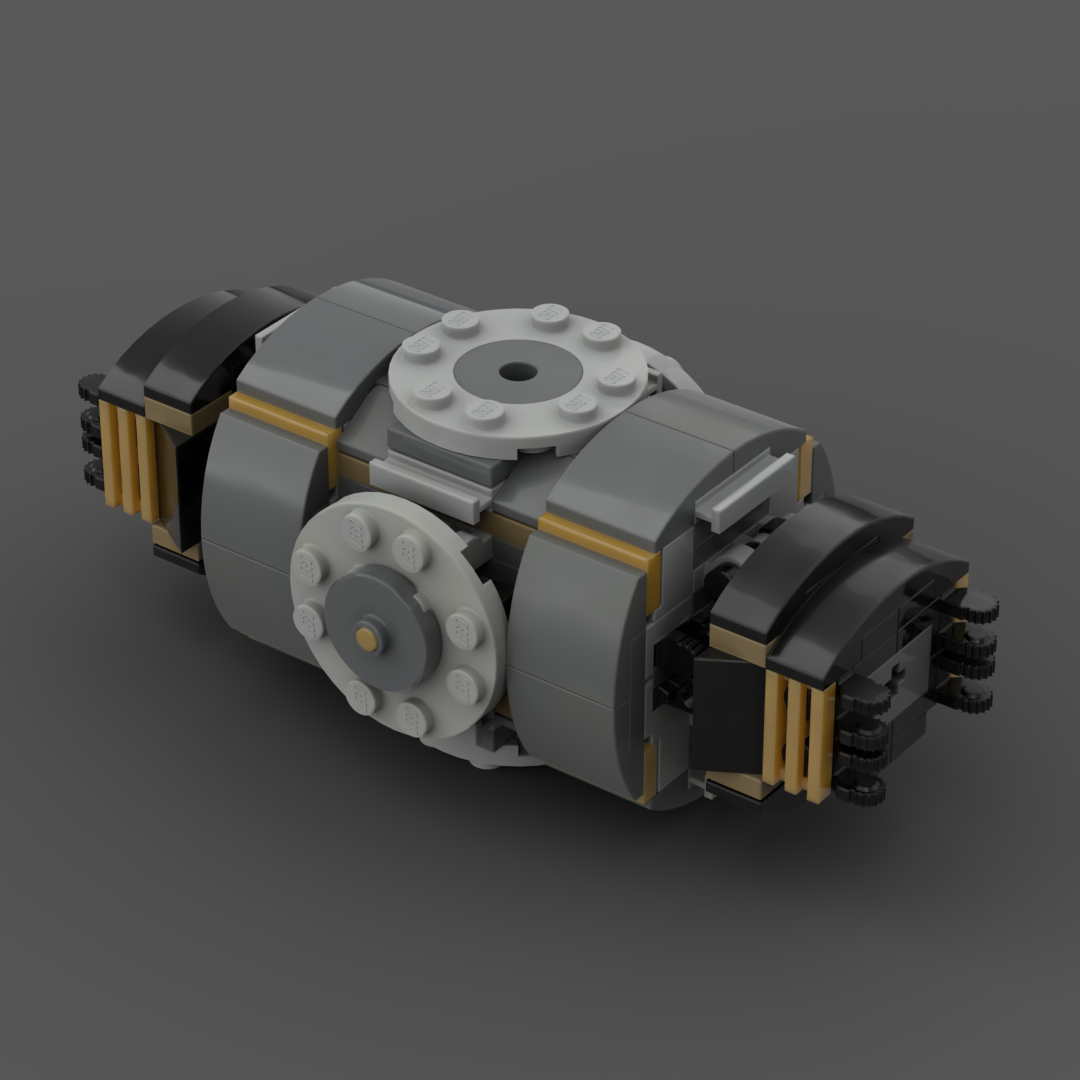
LEGO Designer:
Dan Fallon (phreaddee)
Designed: December 2019
Categories:
Habitable Modules,
All,
Payloads
The Unity connecting module, also known as Node 1, is the first U.S.-built component of the International Space Station (ISS). It connects the Russian and United States segments of the station, and is where crew eat meals together.
The module is cylindrical in shape, with six berthing locations (forward, aft, port, starboard, zenith, and nadir) facilitating connections to other modules. Unity measures 4.57 m (15.0 ft) in diameter, is 5.47 m (17.9 ft) long, made of steel, and was built for NASA by Boeing in a manufacturing facility at the Marshall Space Flight Center in Huntsville, Alabama. Unity is the first of the three connecting modules; the other two are Harmony and Tranquility.
PMA-1
This was one of the first components of the International Space Station. PMA-1 joins the Russian side of the station with the US side. On STS-88, the crew used the shuttle’s robotic arm to attach the Zarya control module to PMA-1, which was already connected to the aft berthing port of Unity. These first two station components are permanently connected by PMA-1.
PMA-2
Locations of PMA-2 and PMA-3 on the forward and zenith ports of Harmony, with International Docking Adapters attached to convert the APAS-95 ports to IDSS
PMA-2 is mounted on the forward port of the Harmony connecting node, and was used when Space Shuttle orbiters docked at the ISS. It was outfitted with Station-to-Shuttle Power Transfer System (SSPTS) hardware to allow the shuttles to stay docked longer to the space station.
PMA-2 has been moved several times as part of the ongoing space station assembly process. It was originally connected to the forward hatch of Unity, but when STS-98 delivered the Destiny module in February 2001, PMA-2 was moved to the berthing ring of the Z1 truss so that Destiny could be berthed to the forward hatch of Unity. PMA-2 was finally moved to the forward hatch of Destiny. (The removal of PMA-2 from Unity was the first time the CBM had been used to disconnect two ISS components.) After STS-120 had delivered Harmony to the space station in October 2007, Canadarm2 repositioned PMA-2 at the forward port of Harmony on November 12, 2007. Two days later, the combined package of Harmony and PMA-2 was moved to its final location, the forward hatch of Destiny. As of 2020, PMA-2 is expected to stay berthed at the forward port of Harmony for the remaining duration of the ISS.
When a shuttle docked with the station, its “final approach [was] at a relative velocity of one-tenth of a foot per second. [As it made] contact with Pressurized Mating Adapter 2 [latches] automatically attached the two spacecraft together. Once relative motion between the spacecraft stopped, [a Shuttle astronaut retracted] the docking ring on [the Shuttle’s] mechanism, closing latches to firmly secure the shuttle to the station.”
On July 18, 2016, International Docking Adapter-2 was launched on SpaceX CRS-9. It was attached and connected to PMA-2 during a spacewalk on August 19, 2016.
Further Information and References
Designer Notes
Part count: bricks, lots.
| Unit | width | length | height |
|---|---|---|---|
| Studs | |||
| Inches | |||
| Centimetres |
Related Posts
None found